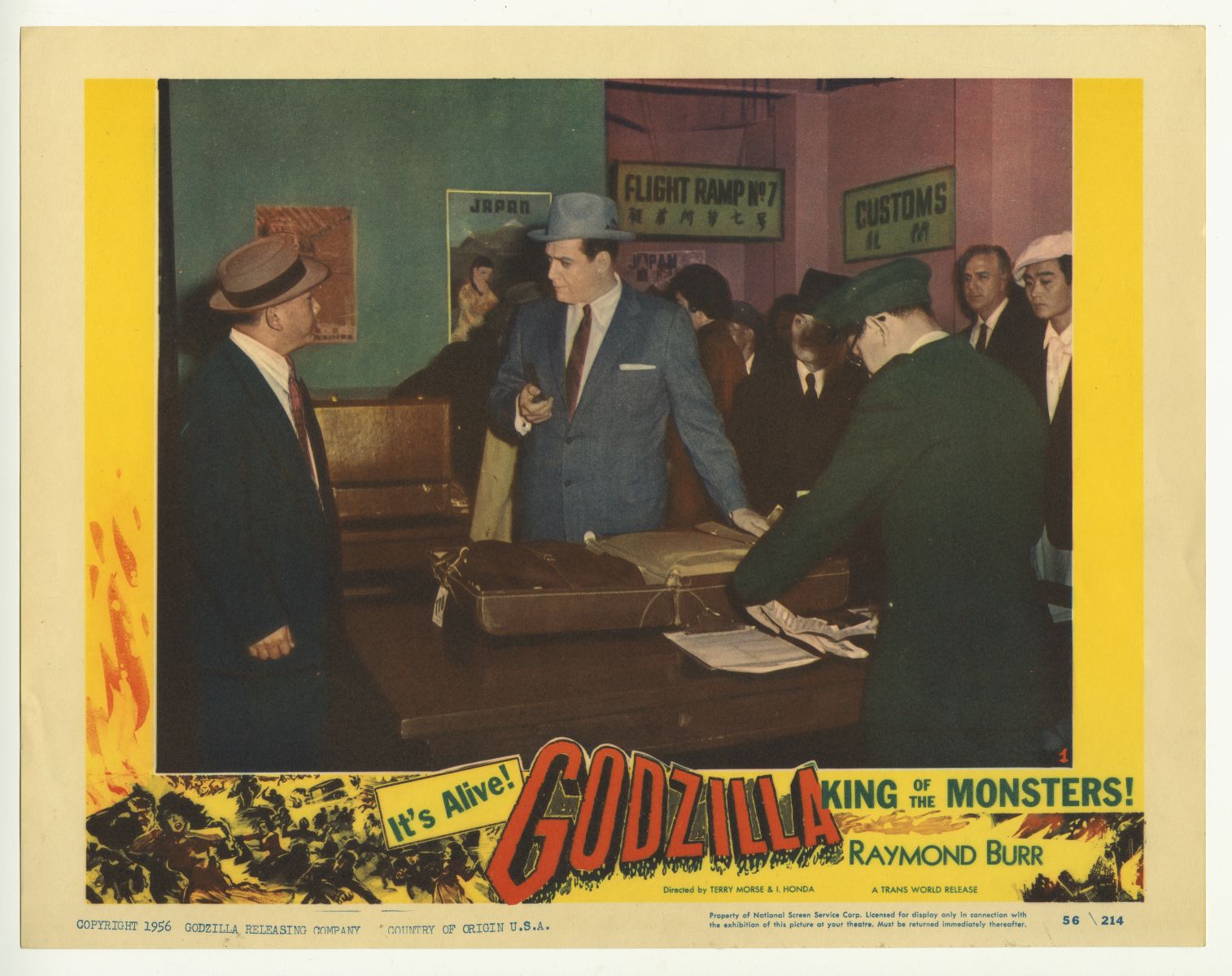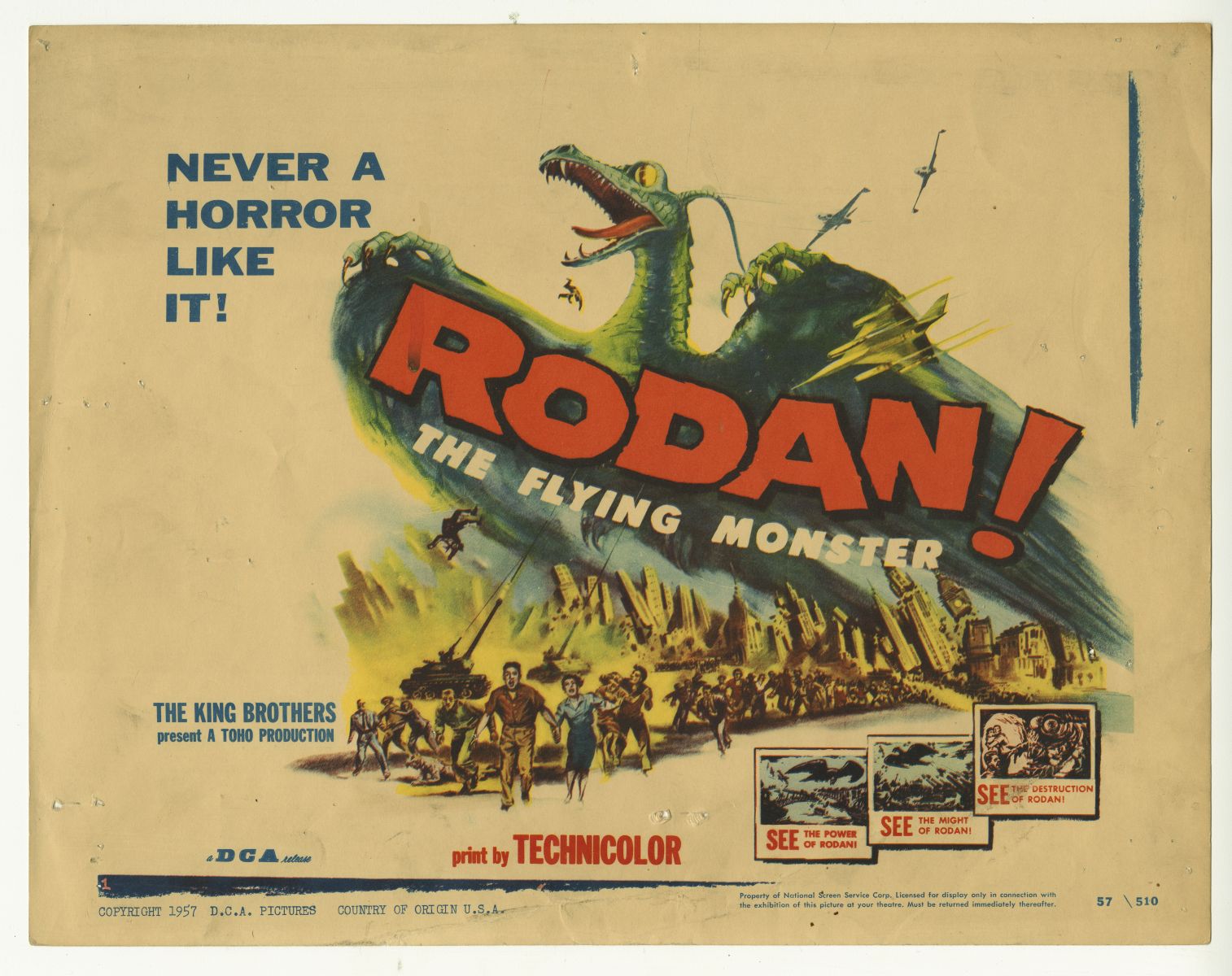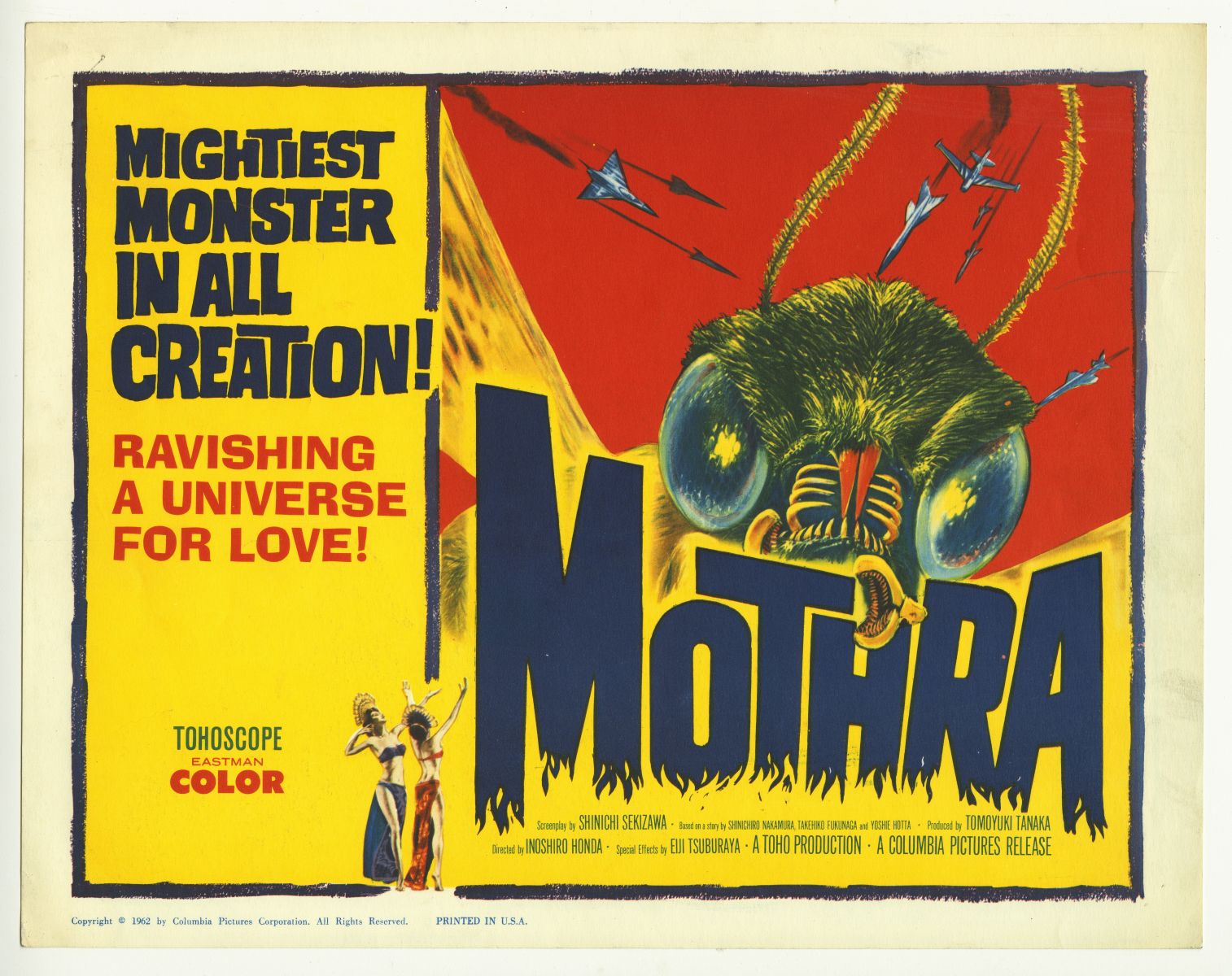The Diane R. Clark Movie Poster Collection and The Importance of Destruction
Written by Erna Anderson, Graduate Student Apprentice.
A common and complex practice within Tibetan Buddhism is the millenia-old, slow and careful creation of sand mandalas. These beautifully intricate creations, geometric and colorful in their design, take weeks, sometimes even months, to complete. A finished sand mandala is a work of art meant to evoke feelings of magic and energy, while often including symbols and deities from the Buddhist pantheon. However, a sand mandala is not created for posterity. Once completed, it is carefully and ritualistically deconstructed, and the grains of sands are poured into nearby streams so that its healing powers can reach out and protect the world. Buddhists explain that the dismantling is crucial, as it shows that even beautiful things are transitory, and nothing material in this world is permanent. For some, this reminder of impermanence can be disheartening or depressing, but for Buddhists the end of a life means that the next one will begin. The old must give way for the new to take hold.
At Special Collections, we try very hard not to destroy any of our holdings. There are special gloves for metal objects, masks for potentially toxic things, and a smattering of suppressors that will, in case of fire, deplete our archives of oxygen and rescue our collection from a devastating accident. However, we have books and artefacts that depict tearing down the old and show that there is catharsis in destruction. This is perhaps most evident in a subset of our Diane R. Clark Movie Poster Collection (MS 00081), namely posters for kaiju films. Kaiju is Japanese for “strange beast,” and these movies are about giant monsters, Godzilla being the prototype, who fight cities, armed forces, or other kaiju, finally leaving the world they entered in ruins before going back to the ocean that birthed them.

(originally released in 1954), which was re-edited for a
Western audience. This version omits references to atomic
bombs and features a reporter played by Raymond Burr,
who was included to appeal to American viewers.
(Diane E. Clark Movie Poster Collection, MS 00081)
Much like fireworks, kaiju films do not hide what they are. And while it is important to acknowledge that post-World War II Japanese movies often deal with monsters seemingly created or enraged by nuclear weapons, it is equally important to enjoy the spectacle we as viewers are offered, and to recognize the labor that was put into making them. Early kaiju films were produced in the 1950’s and 60’s, when effects might have been special for the viewer, but were mainly practical in their conception. Miniature scale models of cityscapes were painstakingly built, which actor Haruo Nakajima, wearing Godzilla legs, then trampled down. For the viewer, there was first novelty in observing the destruction, but as the Godzilla movies became a franchise (and later an expanded universe) leveling a city to the ground became an expectation. As such, a kaiju became less of a threat to humanity and more of a reminder that impermanence is inevitable, and that it is possible to enjoy the ritual deconstruction of art.

that audiences were now expecting destruction, not American
journalists, to be a key feature of kaiju films.
(Diane E. Clark Movie Poster Collection, MS 00081)
The Diane R. Clark Movie Poster Collection holds hundreds of other movie posters that have less to do with Godzilla, Mothra, and Rodan, and more so with Katharine Hepburn, Alec Guinness, and Gary Cooper. But at the heart of every poster lies a promise. Are two people enveloped in each other’s arms? Expect romance. Is Rick Moranis there? Expect goofy shenanigans. Is Mothra surrounded by fighter jets that look tiny by comparison? Expect 101 minutes of scale models of urban landscapes being flooded, trampled, and set ablaze. If you are interested in movies, art, or popular culture, we encourage you to request some of these posters and explore a work of art that was created to promise you distraction and entertainment. And, if you are so inclined, why not see whether or not one of our libraries holds a DVD of that movie whose poster you just looked at? Swem Library has several kaiju movies, including Mothra vs. Godzilla (PN1995.9.H6 M678 2006 DVD), Godzilla (PN1995.9.G63 G616 2006), and Pacific Rim (PN1995.9.S26 P33 2013 DVD). Social distancing and staying healthy is of course our highest priority, but it is possible to go that extra movie night mile and borrow a projector and speakers from the Reeder Media Center. Hang up a sheet somewhat straight and you have yourself a perfectly decent outdoor cinema.

a protector of the people she loves. However, most kaiju have
vacillated between villain, hero, and anti-hero.
(Diane E. Clark Movie Poster Collection, MS 00081)
It is with some trepidation that we can see the end of 2020 and everything that it contained. While 2021 carries with it some of the events and needs from this year, it also brings with it the promise of new and change. Perhaps the close of a year is somewhere between a sand mandala and a kaiju-caused citywide collapse. We celebrate the end by shooting fireworks and sending out healing energies into the universe, but we also recognize the old by rebuilding as we go through the new year, albeit always somewhat differently from the past. The sand mandala reminds us that we as material beings are here but for a brief moment, and that notions of permanence are cold comforts. One day, we will return to the fabric of the universe where we, like the colorful grains of sand, might help things heal. Until then, however, movies like Godzilla exist to remind us that there is joy and catharsis to be found in the idea of a man in a kaiju suit leveling a scale model replica of Tokyo to the ground for the hundredth time.

